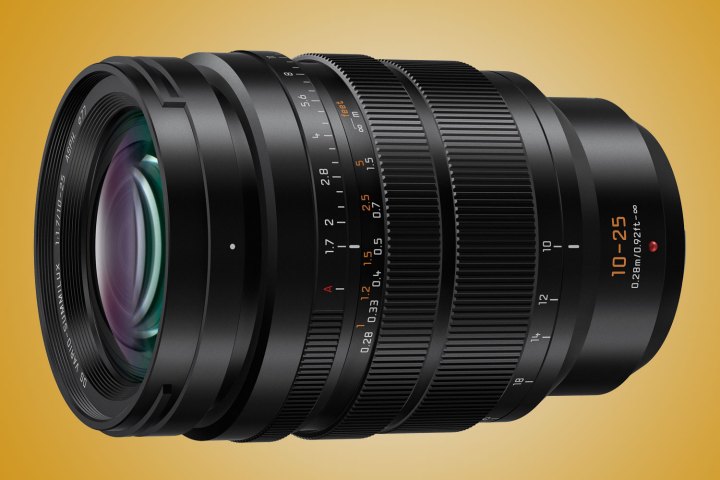
Panasonic is tallying up the “world’s firsts” in a slew of announcements made Friday, May 31. In addition to revealing the first full-frame 6K camera in the Lumix S1H, it also announced a new lens for its smaller Micro Four Thirds system, the Leica DG Vario-Summilux 10-25mm f/1.7. The zoom lens is designed with both still photographers and video shooters in mind, and is the first standard zoom to feature a constant f/1.7 aperture.
Impressive as it is, such a combination of wide aperture and zoom range is certainly easier to achieve on the Micro Four Thirds format compared to lenses for larger full-frame sensors. The 2.5x zoom offers a 20-50mm full-frame equivalent focal length, while the f/1.7 aperture is equivalent to f/3.4 on full-frame. Still, it is by far the fastest zoom lens to grace the Micro Four Thirds format thus far, while also offering a unique focal range not quite matched by other zooms.
Composed of 17 elements in 12 groups, including three aspherical elements and four extra-low dispersion (ED) elements, the 10-25mm f/1.7 promises image quality worthy of its Leica nameplate (as part of its partnership with Panasonic, Leica lends its name to certain Panasonic lenses that meet stringent quality standards). It also features a 9-blade aperture which should provide more circular out-of-focus highlights.
Beyond optical quality, the new zoom is sealed against dust and moisture for use in all weather conditions. Targeting Lumix GH5 and GH5S owners, it also incorporates a special mechanism to suppress focus breathing — where a lens appears to zoom slightly when adjusting the focus — which is important to videographers.
In addition to the Micro Four Thirds lens, Panasonic also introduced two teleconverters for its full-frame S series cameras. The DMW-STC14 and DMW-STC20 provide magnifications of 1.4x and 2x, respectively, and are compatible with the existing 70-200mm f/4 and upcoming 70-200mm f/2.8 lenses.
Prices for the new teleconverters haven’t been announced, but the 10-25mm f/1.7 lens will go for $1,700 when it releases in July — certainly not cheap, but we might have expected worse. Panasonic’s older 12-35mm f/2.8 has an MSRP of about $1,000, and while the 10-25mm doesn’t have as much range, the aperture is over twice as wide.



